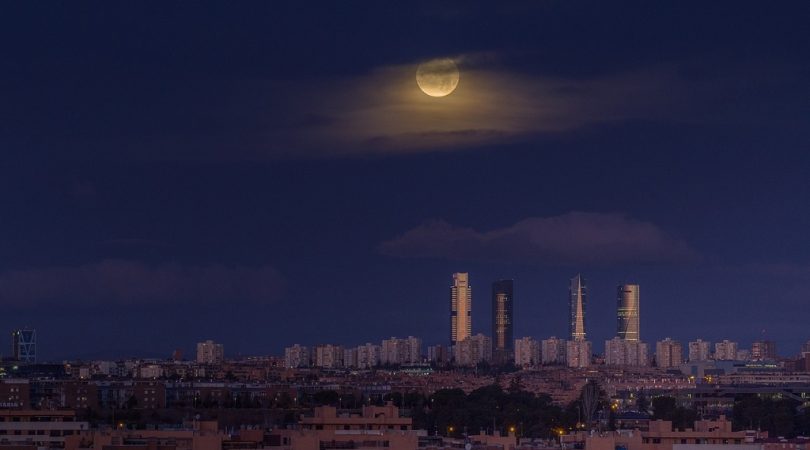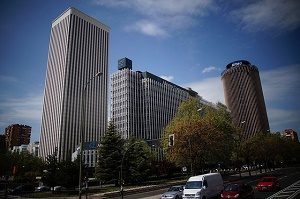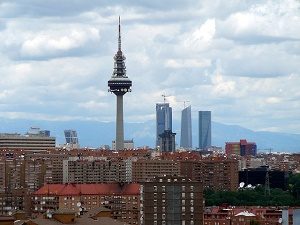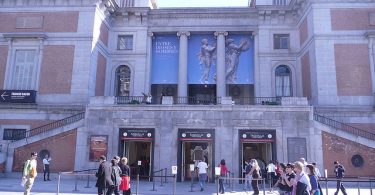You can learn about Madrid’s history by observing its buildings and monuments, and through every one of these architectural elements you can discover Madrid’s development.
If you are interested in Madrid’s most modern architecture and the buildings that were constructed after the 1940s, do not miss this article on ShMadrid’s blog.
We will focus on contemporary Madrid today. Its construction started during the time of the civil war, building activities continued after the war, and constructions are still going on today.
Related article: Madrid’s Unknown Residential Neighbourhoods
Index
Explore modern areas and buildings in Madrid
Castellana
The building complex Nuevos Ministerios (a government complex) has been developed in the 1940s, and this is where currently the headquarters of the Ministries of Development and Employment reside.
Together with the Nuevos Ministerios, they also started building the Azca complex in the Chamartín neighbourhood, which is where the financial heart of the city begins. The most characteristic buildings are Torre Picasso, Torre Europa and Torre BBVA.
You can also admire Plaza de Cuzco and a zone that leads to Plaza de Castilla, with its emblematic Torres Puerta de Europa that are also known as Torres Kio, and the headquarters of Fundación Canal.
The Cuatro Torres Business Area, a business park built on the land of what was previously known as Ciudad Deportiva del Real Madrid, is also housed in La Castellana. It consists of four skyscrapers, that are actually the tallest buildings in Madrid and entire Spain. These four skycrapers are: Torre de Cristal – the highest building in Madrid and Spain with a height of 249 metres – , Torre Cepsa, Torre PwC and Torre Espacio.
Madrid Río
The area called Madrid Río opened in April 2011. It covers an area of almost 700 hectares. Alongside both river banks and in its surroundings, you will encounter many resident services and special places of interest. Four important pillars formed the basis on which this area was developed: new architectural icons, a green zone, sports, leisure and culture.
Related article: The Most Expensive Districts in Madrid to Rent
Aeropuerto-Feria de Madrid
Despite being on the outskirts of the city, the Adolfo Suárez Madrid-Barajas Airport area and the Campo de las Naciones (where you will find the largest Spanish exhibition complex: IFEMA Feria de Madrid) are important parts of the city.
IFEMA hosts more than 80 events each year, supporting numerous economic sectors. Among the events are FITUR, ARCOMadrid and Mercedes Benz Fashion Week Madrid, which are the most exemplary events and true ambassadors for Spain and Madrid.
El Cañaveral
The last administrative neighbourhood that was added to the district of Vicálvaro is El Cañaveral. It is located south of Coslada, in the very northeastern part of Vicálvaro. Construction of this neighborhood began in 2013 and its first inhabitants moved into the neighbourhood in 2016. Currently, more than 3,000 residents are living in this neighbourhood.
As the neighbourhood has only been existing for three years, there is still a lack of services, like schools, colleges and health centres, but due to the proximity of and connections with Coslada (Madrid), it is possible for children to go to a school or college nearby.
What do you think of modern Madrid?








